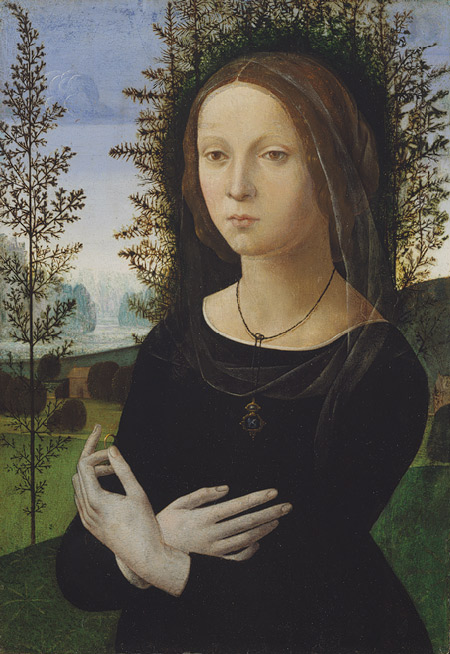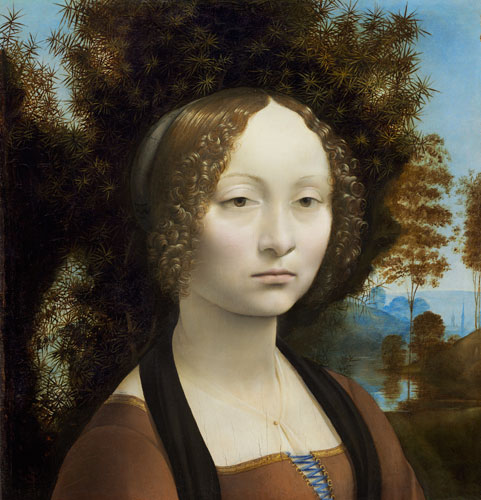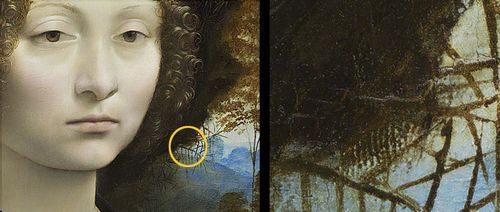JF Ptak Science Books Post 2033
Part of a series on the History of Blank, Empty and Missing Things
 [Image source: Metropolitan Museum of Art.]
[Image source: Metropolitan Museum of Art.]
The idea of negative imaging--of forming an image "backwards", or by using a surrounding space to define the image's properties--came into play for me while looking at this beautiful portrait in the collection of the Metropolitan Museum of Art in NYC. Lorenzo di Credi (Florentine, ca. 1456-1536) painted Portrait of a Woman (an oil on panel) in the last decade of the 15th century, a beautiful work presenting the portrait of a woman who was possibly in mourning, modestly dressed in very dark clothing and holding a ring. What strikes me is the "dark halo" around her head, a black space outlining her head and neck and shoulders, giving all of those features a further powerful light by the very wide border between them and the juniper in the background. I imagine that this technique was used to establish a deep luminosity, but for me it also creates the presence of a halo by painting its absence--this is admittedly tenuous, but that is the way it seems, to me.
It also reminds me in a way of Leonardo da Vinci's Ginevra de' Benci, (c. 1474/1478, oil on panel), though there is much more detail in Leonardo's non-halo.
[Image source: National Gallery of Art, Washington D.C.]
Even
though there does not seem to be a "halo" in the Leonardo, there does
seem to be a fingerprint where the non-halo isn't--evidently Leonardo
did not limit himself to just the brush in his painting technique, but
used his fingers as well.





Comments